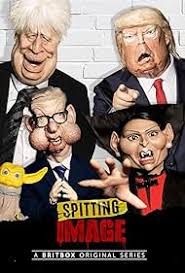The Impact of Spitting Image on UK Culture

Introduction
The British television series ‘Spitting Image’ holds a significant place in cultural history as a satirical puppet show that cleverly critiqued politics and public figures through humour. Originally aired from 1984 to 1996, the show’s return in 2020 marked a revival of a classic that resonates with contemporary political climates. Its relevance is evident in how it tackles current events and society’s leaders, making it a pertinent topic for discussions on media influence and satire today.
Historical Context and Revival
‘Spitting Image’ first captivated audiences during its initial run, using caricatures of politicians and celebrities to highlight absurdities in their actions and policies. The show’s unique format attracted millions of viewers and sparked conversations across the nation. In April 2020, ‘Spitting Image’ was revived, bringing fresh commentary on today’s political landscape, including the global pandemic’s impact and its effects on governance. By leveraging social media, the revived series quickly gathered a dedicated viewer base, indicating the show’s significant cultural footprint.
Political Commentary and Satire
The power of satire lies in its ability to challenge authority and provoke thought. ‘Spitting Image’ has been known for its bold portrayal of figures such as Boris Johnson and Donald Trump, using humour to dissect their policies and personalities. The show’s irreverent nature allows it to remain relevant, as each episode responds to current events with a clever twist. This form of commentary fosters public discourse and encourages viewers to critically evaluate the actions of their leaders.
Audience Reception and Social Impact
Viewers have responded positively to the show’s return, appreciating its timely commentary on pressing issues. Many fans express a longing for the original series, whilst also embracing the new format that gifts them a fresh perspective on modern politics. The intertwining of puppetry with real-world events allows for a unique engagement with serious subjects through comedy, making it accessible and entertaining for a broader audience.
Conclusion
The cultural significance of ‘Spitting Image’ cannot be overstated. It not only provides a means of entertainment but also serves as an essential platform for political critique and social commentary. As society continues to navigate complex issues, the show’s ongoing engagement with current events signals its relevance. In a time where misinformation and political tension are common, ‘Spitting Image’ empowers audiences with humour and perspective, ensuring that the conversation surrounding leaders and their choices remains vibrant and impactful.









